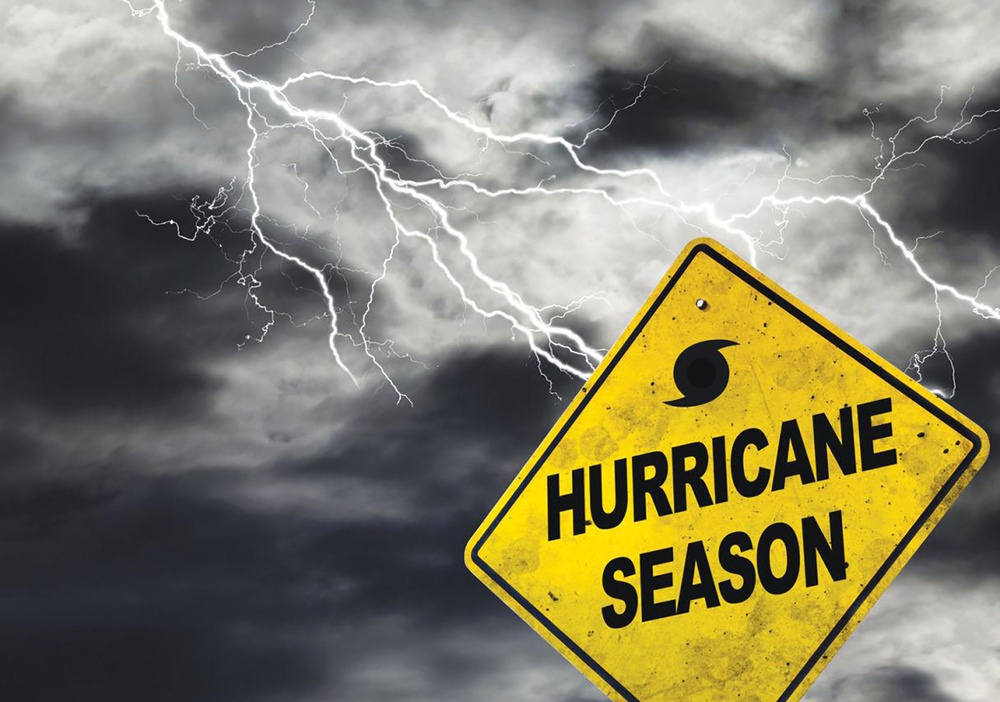DVIDS – News – Summer brings increase in severe storm activity
FORT LEE, Va. – Of all the safety hazards Team Lee members will likely face this summer, extreme weather ranks No. 1 for unpredictability and harmful results ranging from property loss to life-threatening injury.
As witnessed over the past few days, heavy rainfall events that cause flash flooding and intense thunderstorms with deadly lightning are common. Virginians have experienced them every summer for as long as most can remember. Tornadoes and hurricanes are less frequent but are still familiar to anyone who has lived here for more than a few years.
Hurricane season began June 1, and it continues through Nov. 30. The National Oceanic and Atmospheric Administration is once again predicting an “above normal” season with 13-20 named storms. As many as 10 of those are projected to reach hurricane strength (winds of 74 mph or greater) and at least a third of those are expected to reach or exceed category 3, meaning wind speeds of 111 mph or higher.
“If there are any skeptics on the team, they should take a moment to go online and read the recap of the 2020 hurricane season, noting that last year’s projected storm totals by NOAA were far exceeded and the 11 storms that made landfall in the continental U.S. broke a record that was set in 1916,” observed Thomas Loden, installation emergency manager with the Directorate of Plans, Training, Mobilization and Security.
“The storms last year were devastating as well,” Loden continued. “Laura, the category 4 hurricane that slammed into Louisiana in August, caused more than $19 billion in damage and resulted in 77 deaths. Our region also has had its share of costly and deadly storms – Matthew, Irene, Hermine and Sandy – over the past decade. The bottom line is that we can’t afford unpreparedness. The potential cost is too great.”
The one thing extreme weather events have in common is the ability to cause massive property damage and human injury, Loden reiterated. That commonality applies equally to hurricanes, tornadoes and nor’easters, an upper-Atlantic-East-Coast phenomenon.
“Furthermore, they all test how well you’ve planned and prepared,” he said. “Those who do nothing stand the greatest risk of experiencing harm. Proactive individuals who take the time to educate and equip themselves stand a better chance of survival.
“Building a defense starts with basic questions like what is the threat and how would I (or my family) survive?” Loden continued. “Consider home or office preparations to prevent damage, emergency notification, shelter or evacuation, food and medical needs, and so on. Remember to plan for the worst-case scenario because that type of thinking has saved the lives of many individuals, particularly in a situation like a hurricane where the duration, intensity and aftermath of the storm typically extends over several days or weeks. An equally important consideration is how COVID-19 will factor into your plans. It’s likely emergency shelters will still require the wearing of masks and social distancing, for example.”
Loden encourages community members to regularly monitor radio and television broadcasts for emergency weather updates. Every installation employee, military or civilian, also should be registered in the “Alert!” emergency warning and mass notification system. It is mandatory for permanent party service members and DOD Civilians. Contactors can do so as well.
Enrollment requires a Common Access Card. The registration site is alert.csd.disa.mil/AlertSplashPage. Individuals are highly encouraged to authorize personal cell or home phone notices so they’re receiving updates when they’re off-duty. If any difficulties with registration are encountered, seek assistance from your organization’s computer technician or the personnel manager assigned to most units.
The following are additional emergency preparedness steps offered by DPTMS:
• Assemble or update emergency supplies for the home, car and workplace.
• Learn about local hazards and create an emergency plan. Don’t forget your pets.
• Ensure critical documents are up-to-date and stored in a weather and/or fireproof container.
• Create proof of valuable property ownership (i.e. take photos, make an inventory list) and obtain appropriate insurance for relevant hazards.
• Make property improvements to reduce potential injury or damage.
• Know the difference between watches and warnings, and how to properly respond to both.
Community members are encouraged to read future articles produced by the Garrison Public Affairs Office and attend relevant briefings to ensure they have the latest information and awareness tips. The Emergency Management Branch can be contacted at 804-765-2680.
There are several resources available to assist with emergency planning and preparation, including:
• Virginia Emergency Preparedness Website: – www.vaemergency.gov.
• Federal Emergency Management Agency Mobile App – www.fema.gov/mobile-app.
• Children and youth preparedness toolkit – www.ready.gov/youth-toolkit.
• Fort Lee Hazardous Weather Guide – home.army.mil/lee/index.php/hazweather.
| Date Taken: | 06.11.2021 |
| Date Posted: | 06.11.2021 15:13 |
| Story ID: | 398744 |
| Location: | FORT LEE, VA, US |
| Web Views: | 23 |
| Downloads: | 0 |
PUBLIC DOMAIN
This work, Summer brings increase in severe storm activity, by Patrick Buffett, identified by DVIDS, must comply with the restrictions shown on https://www.dvidshub.net/about/copyright.


 Private Internet Access gives you unparalleled access to thousands
of next-gen servers in over 83 countries and each US state. Your
VPN experience will always be fast, smooth, and reliable.
Private Internet Access gives you unparalleled access to thousands
of next-gen servers in over 83 countries and each US state. Your
VPN experience will always be fast, smooth, and reliable.
